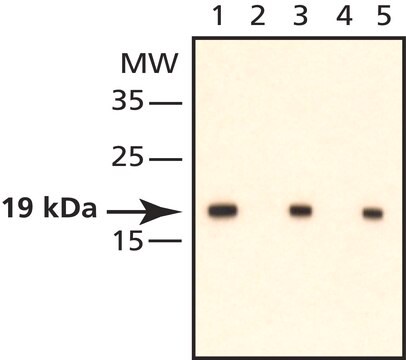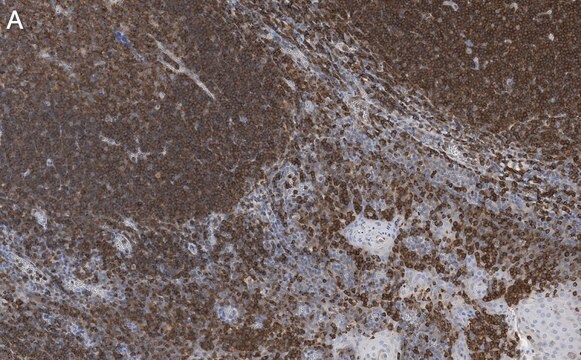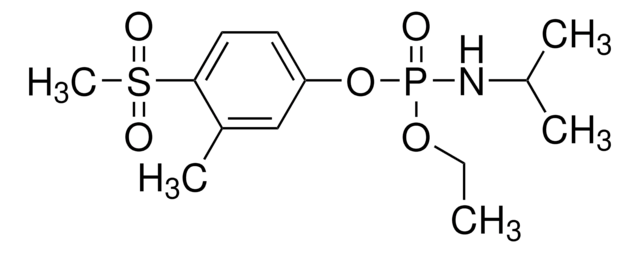Kluczowe dokumenty
C8736
Anti-Cofilin antibody produced in rabbit
IgG fraction of antiserum, buffered aqueous solution
Synonim(y):
Anti-CFL, Anti-HEL-S-15, Anti-cofilin
About This Item
Polecane produkty
pochodzenie biologiczne
rabbit
Poziom jakości
białko sprzężone
unconjugated
forma przeciwciała
IgG fraction of antiserum
rodzaj przeciwciała
primary antibodies
klon
polyclonal
Formularz
buffered aqueous solution
masa cząsteczkowa
antigen ~19 kDa
reaktywność gatunkowa
canine, rat, human, mouse
metody
indirect immunofluorescence: 1:1,000 using using mouse NIH/3T3 fibroblasts
microarray: suitable
western blot: 1:10,000 using using whole extracts of human A-431, rat PC-12, mouse NIH/3T3, and dog MDCK kidney cells
numer dostępu UniProt
Warunki transportu
dry ice
temp. przechowywania
−20°C
docelowa modyfikacja potranslacyjna
unmodified
informacje o genach
human ... CFL1(1072) , CFL2(1073)
mouse ... Cfl1(12631) , Cfl2(12632)
rat ... Cfl1(29271) , Cfl2(366624)
Powiązane kategorie
Opis ogólny
Specyficzność
Immunogen
Zastosowanie
- for immunostaining of chick neurons. It is used as a primary antibody
- for western blotting of protein isolated from mouse hippocampi cells, rat brain samples, human acute lymphoblastic T-cell line, human brain samples, head and neck squamous cell carcinoma cell line, HEK293T cells and renal epithelial cell lines
- for immunofluorescence studies in tissue samples from human brain
Działania biochem./fizjol.
Postać fizyczna
Przechowywanie i stabilność
Oświadczenie o zrzeczeniu się odpowiedzialności
Nie możesz znaleźć właściwego produktu?
Wypróbuj nasz Narzędzie selektora produktów.
polecane
produkt powiązany
Kod klasy składowania
10 - Combustible liquids
Klasa zagrożenia wodnego (WGK)
WGK 1
Temperatura zapłonu (°F)
Not applicable
Temperatura zapłonu (°C)
Not applicable
Wybierz jedną z najnowszych wersji:
Masz już ten produkt?
Dokumenty związane z niedawno zakupionymi produktami zostały zamieszczone w Bibliotece dokumentów.
Nasz zespół naukowców ma doświadczenie we wszystkich obszarach badań, w tym w naukach przyrodniczych, materiałoznawstwie, syntezie chemicznej, chromatografii, analityce i wielu innych dziedzinach.
Skontaktuj się z zespołem ds. pomocy technicznej








